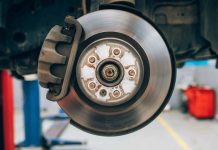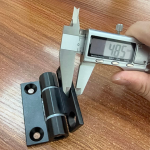A brake caliper is an essential component of your car that helps the vehicle stop or slows down by creating the required amount of friction. But sometimes, the brake caliper may not work well because of some defects. In this case, you need a brake caliper replacement for the proper functioning of the brake caliper to avoid any accidents.
Discuss the main reasons for brake caliper replacement.
Here are some notable signs that will make you understand that you need your brake caliper replacement.
Produces noise during breaking:
When you hit the brake and hear the groaning sounds or squealing having a high pitch, it means your car’s brake disc is worn out. The worn-out brake disc badly affects the brake rotor and brake caliper. Hence, you immediately need brake calipers replacement.
The brake pedal softens:
When the air in the brake pedal seeps into the brake fluid, it will feel soft when you press it. It results in a spongy brake pedal that causes the failure of the brake caliper. Here you need the replacement of the brake caliper and the brake pedal.
Brake caliper leaking:
Whenever the caliper piston seal is damaged, it causes the breakage of brake fluid into the caliper. So, when you find such leakage, it is better to replace the brake caliper instantly.
Brake warning lights turn on:
The cars come with a brake warning that turns on due to the improper functioning of the brake system. So, when the brake warning lights of your car turn on, then understand that there is some serious problem with your braking system. Replace the brake caliper or other affected parts to resolve the issue.
What are the main steps involved in brake caliper replacement?
Avoid replacing the brake caliper by yourself. Always prefer a mechanic for its replacement. Following are the main steps that are involved in the brake caliper replacement.
- Stop the car on a targeted platform and prevent the vehicle from rolling by engaging the parking brake.
- Elevate the car’s defective parts by using a jack.
- Remove the tire assembly and wheel using a lug nut wrench.
- Put a pan on the lower side of the old caliper, followed by removing the brake line.
- Prevent brake fluid loss by plunging the brake line of the car.
- Please take out the old caliper mounting bolt by loosening it.
- Use a screwdriver for the removal of the old caliper.
- Detach the brake pads from the caliper bracket.
- Take a new caliper and place it on the brake rotor. Once the new brake caliper is installed, attach the brake pads with the mounting bracket.
- Then, the new caliper mounting bolts are tightened.
- In the next step, the brake hose is reinstalled.
- Use a brake bleeding tool to bleed the brakes with the bleeder screw.
- In the last, check the proper working of the caliper assembly.
Conclusion:
The proper working of the brake caliper controls the movement of vehicles and allows them to start and stop. But, if the caliper brake system shows disrupted functioning, it will directly affect the car’s braking system. If left unchecked, then it can cause severe accidents and Injuries. Therefore, defected brake caliper should replace to allow the exact functioning of the brakes.












